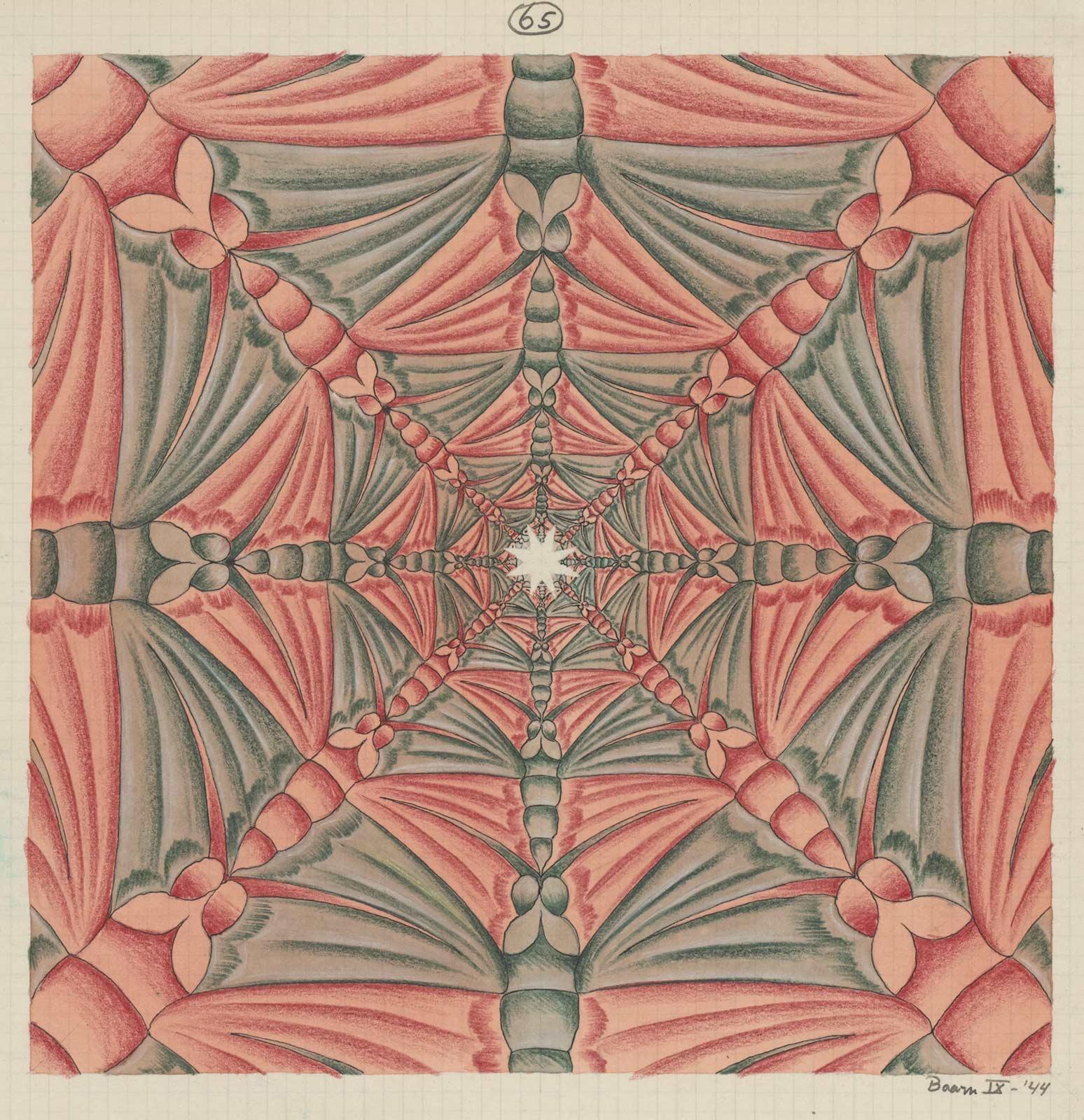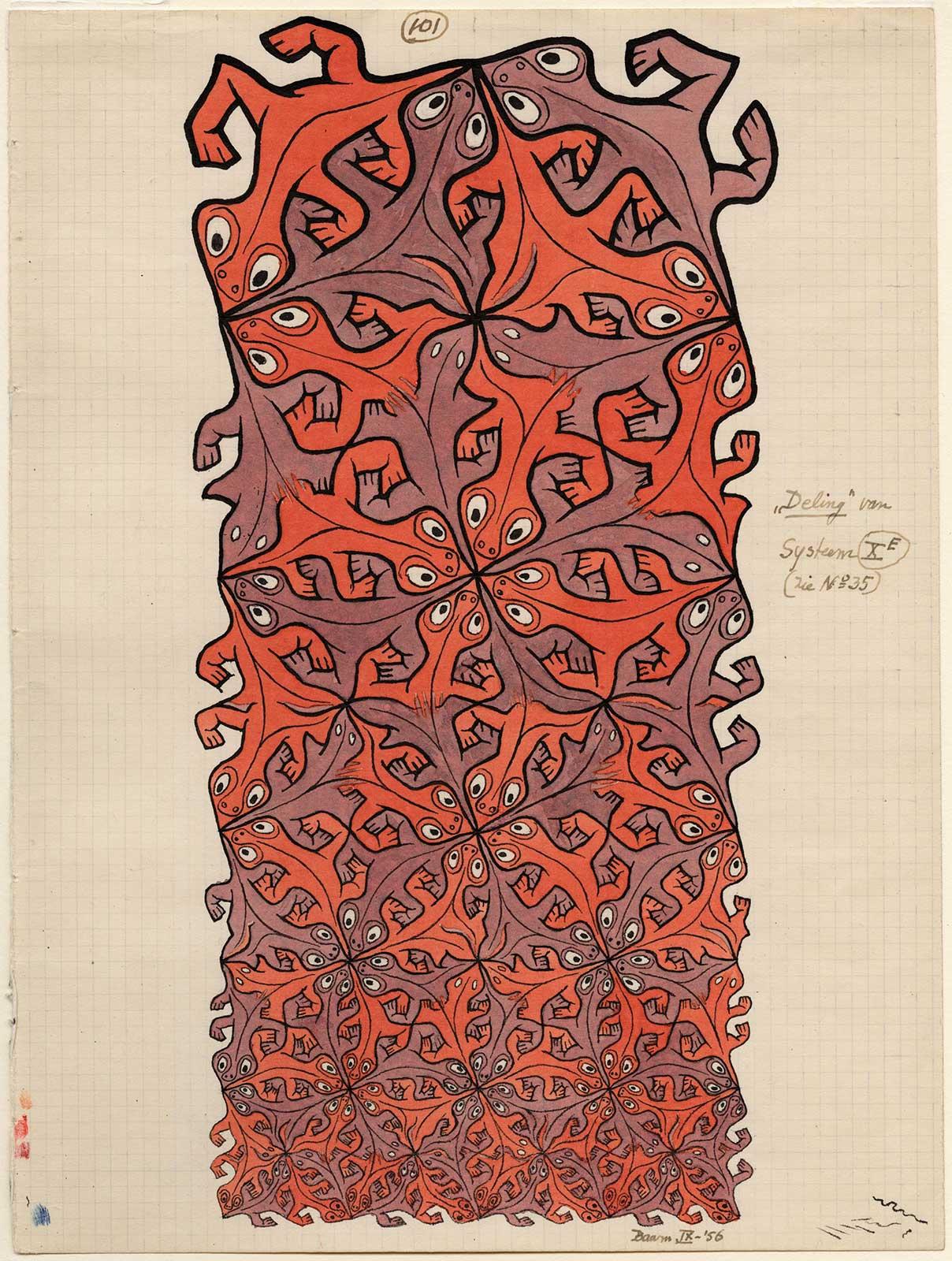

On 23 September 1957, Escher returned to Amsterdam from a sea voyage with the freighter SS Luna. By that point, Escher had long been addicted to travelling on cargo ships and he seized every opportunity to book such a trip. In August and September 1957, he spent seven weeks bobbing around on the Mediterranean Sea, enjoying the waves, the peace and quiet, the light and the silence. Back in the Netherlands, he reflected on the experience for a while.*
For example, he wrote about it to his friend Oey Tjeng Sit:
'Ideally I would spend a whole year on a freighter watching the waves. If God himself, in honour of my 60th birthday, would give me the strength and the power and the glory, now and forever, to draw a beautiful wave. But no, nothing like that. As soon as I got home I tried it, to no avail. I started spirals instead. That at least gave me something to go on. Drawing waves—those apparently shapeless, chaotic glories—is something I will have to leave to you and your (almost ex-)compatriots.'**
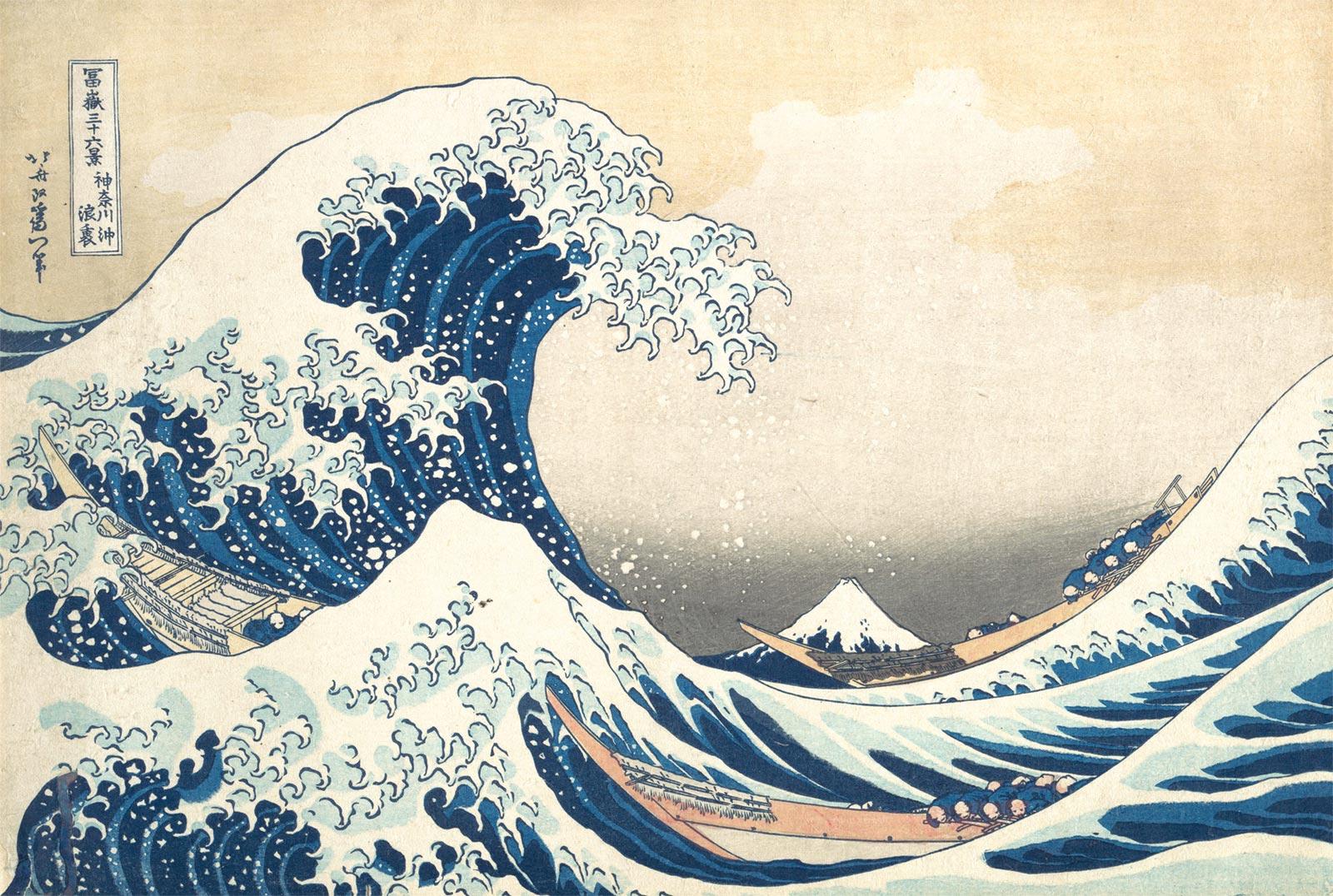
Oey Tjeng Sit was born on Java, but with the latter remark, Escher was referring to Asians in general, and in particular the Japanese artist Katsushika Hokusai.*** Escher was very aware of the extraordinary qualities of this master, who was unsurpassed in his ability to capture the dynamics of the wild sea in graphic form. Hokusai (1760-1849) produced portraits and still lifes, but is mainly known for his landscapes. Yet there is only one print that is universally known and to which Escher’s comment was referring as well: The Great Wave off Kanagawa. It is world-famous and has been so for a long time. After the opening of the Japanese ports in 1854, the print went on to become a coveted collector’s item in Europe. Vincent van Gogh did not have a copy of it, but he did know of the Wave. In September 1888, he wrote to his brother Theo:
'These waves are claws, the boat is caught in them, and you feel it. Hokusai makes you scream […], albeit with lines.'
The print dates from around 1831. Hokusai was already over 70 years old and a celebrated artist in his own country. He portrayed a heaving sea with three boats and a giant wave with Mount Fuji in the morning sun in the background. It is the archetype of the Japanese woodcut, an image so powerful that it survives every violation (the print has been commercialised in countless ways). This is due to the simplicity of the image itself, but also because of its metaphorical value. The wave cannot be separated from Japan’s war history. It featured on propaganda posters in the Second World War, after which it was forbidden by the American occupying forces, only to make a comeback during the 1964 Olympics. Hence, the Great Wave also stands for national autonomy and pride on the part of citizens.
Escher too realised that the ultimate wave had already been created. Not that he had never drawn waves or cut them into wood. He had even started in lino. Waves from 1918 already indicate an early fascination with the subject. They are also clearly visible in the woodcut The Second Day of Creation. What is particularly striking, is that the sea, which he often depicted in his work, is usually very settled. There are no waves to be seen. There is barely a ripple, as is the case in Castle in the Air, Citadel of Calvi, The Drowned Cathedral, Scilla or Atrani. In Phosphorescent Sea you can see a few small waves rolling up the beach, but this is nothing to write home about. This is partly due to the fact that there were very few waves during the period that Escher visited these places, but perhaps he already knew his limitations. In his work after the war no waves can be seen at all.
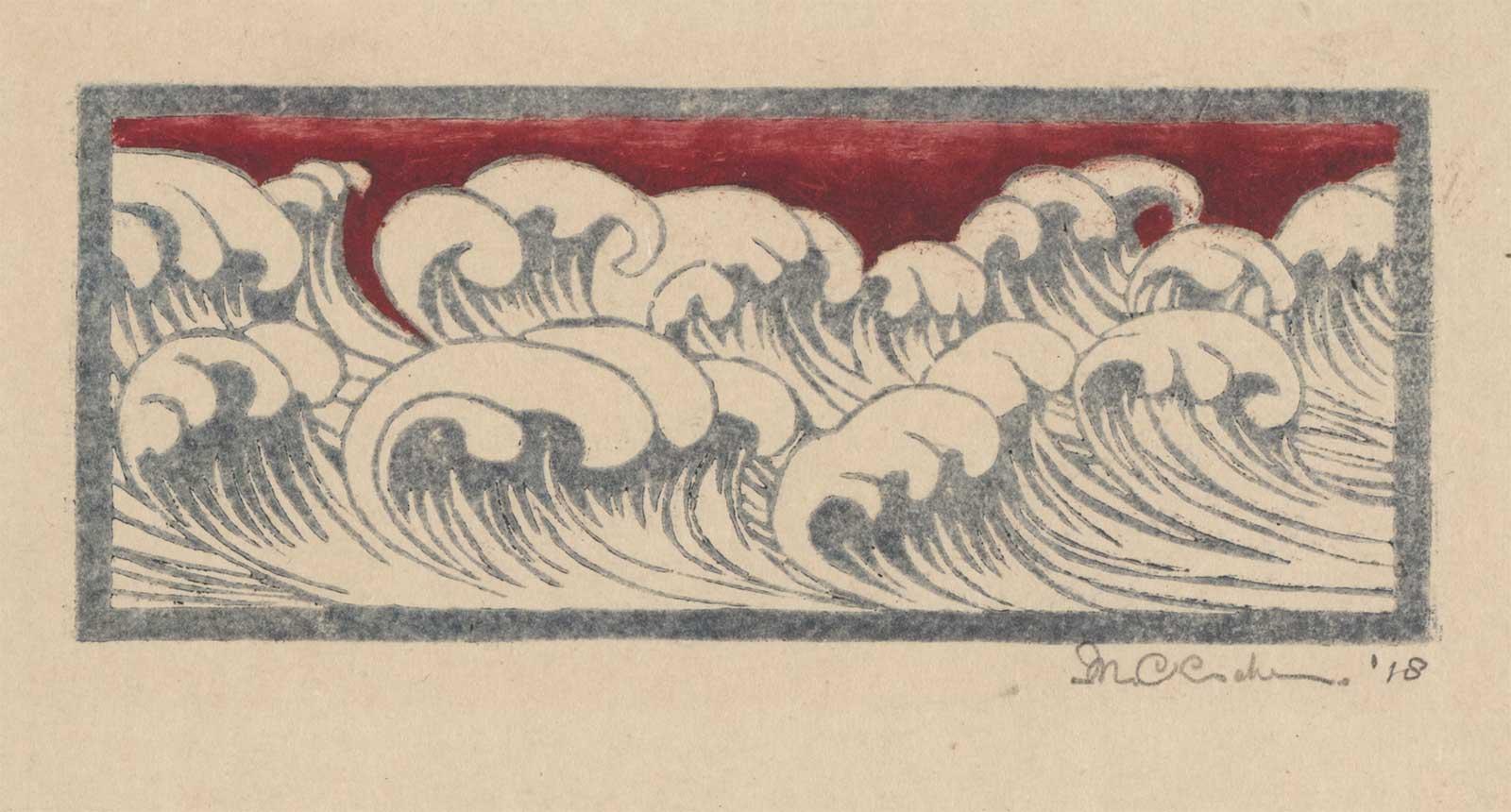
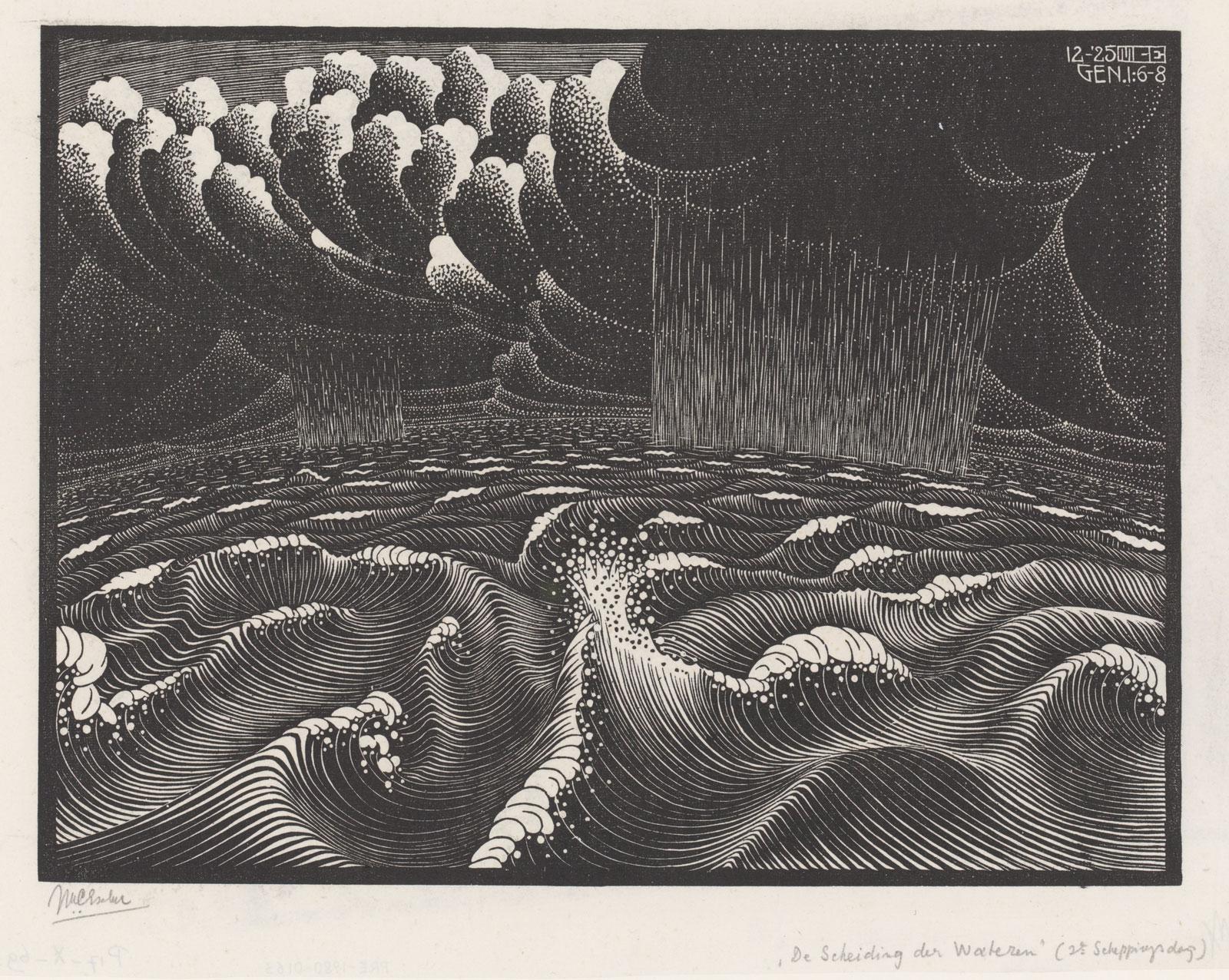
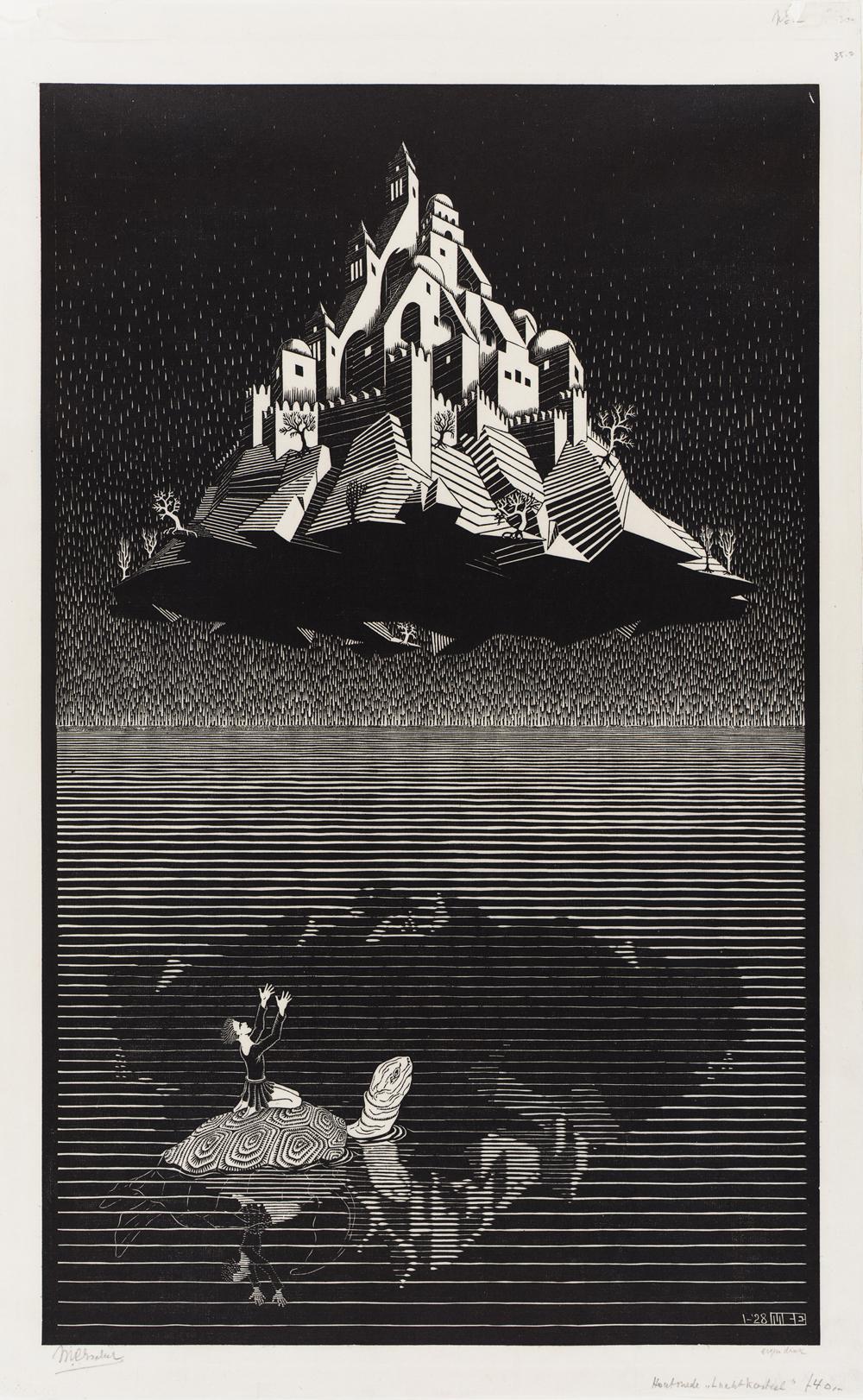
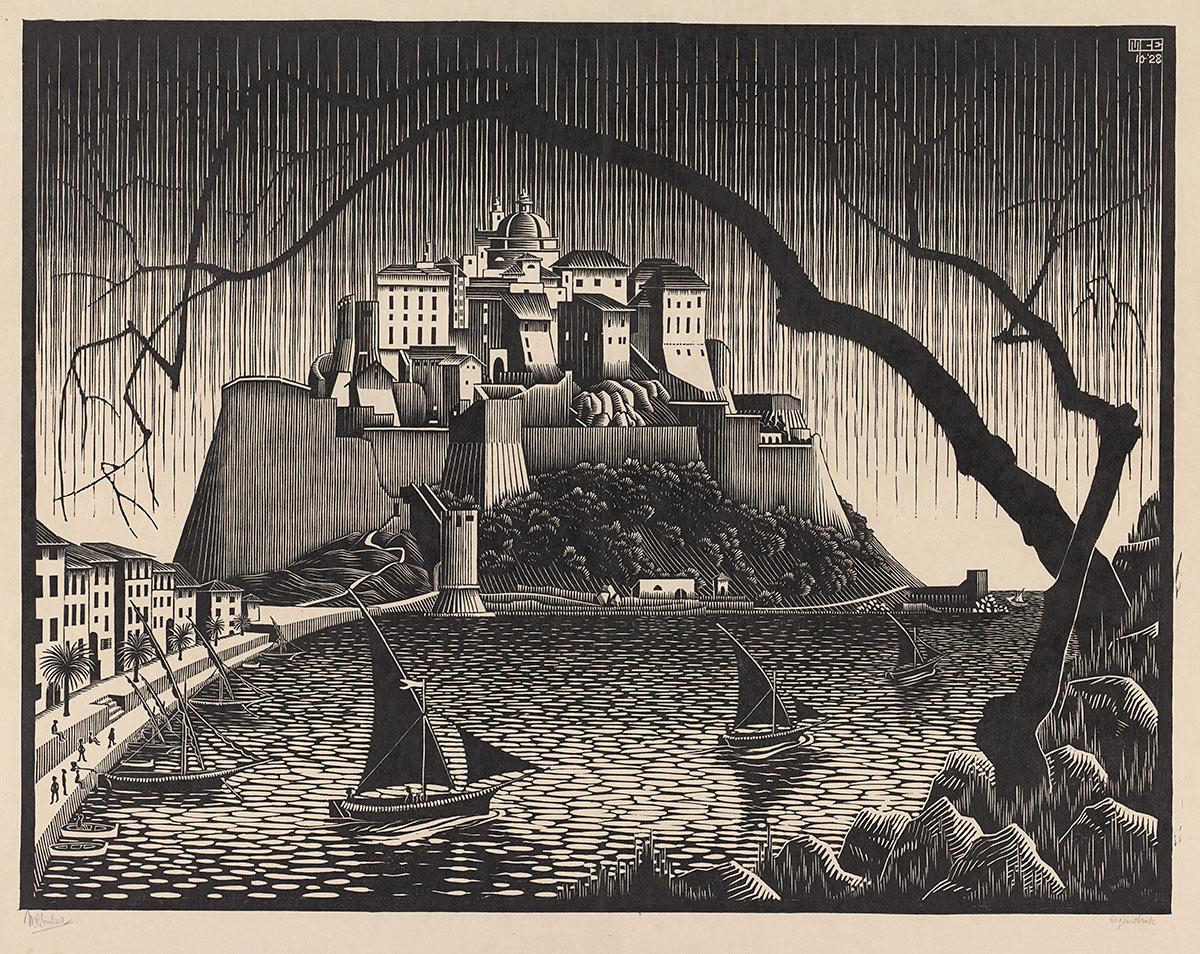
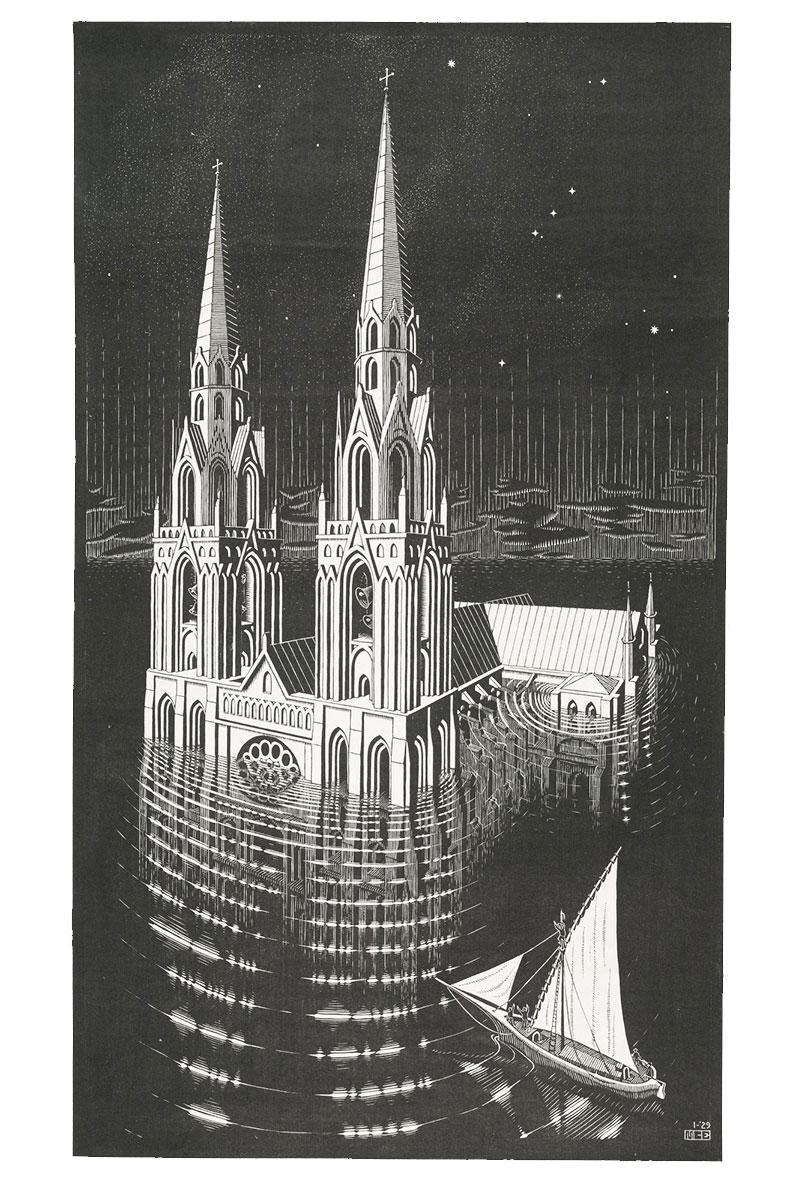
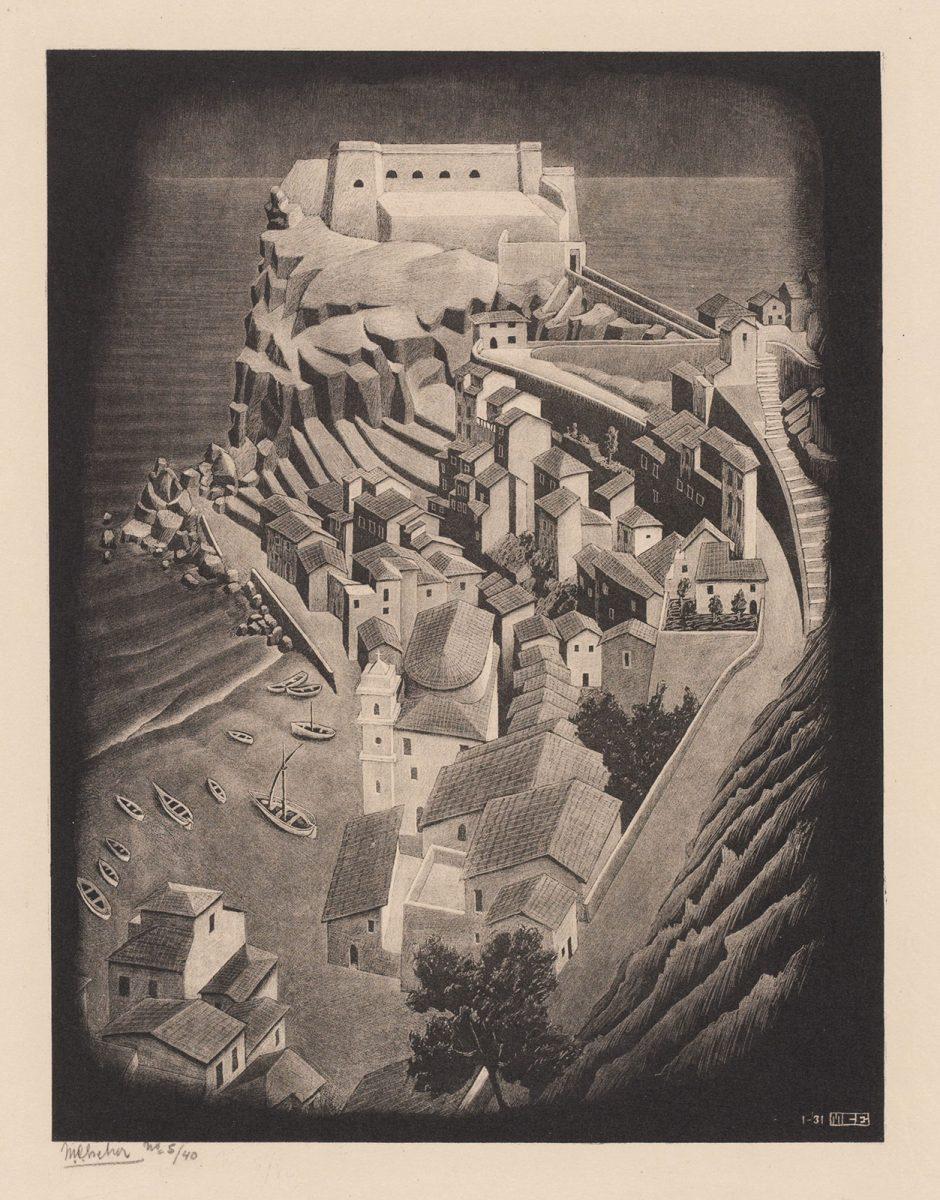
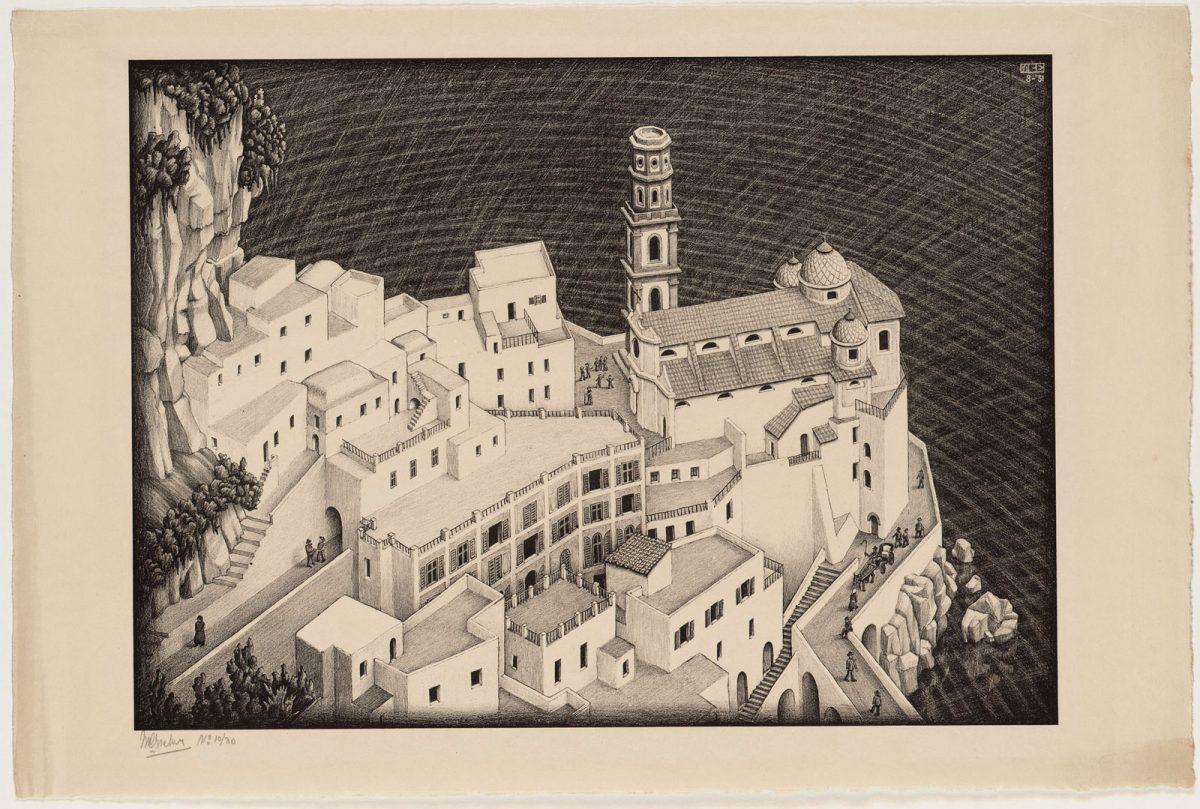
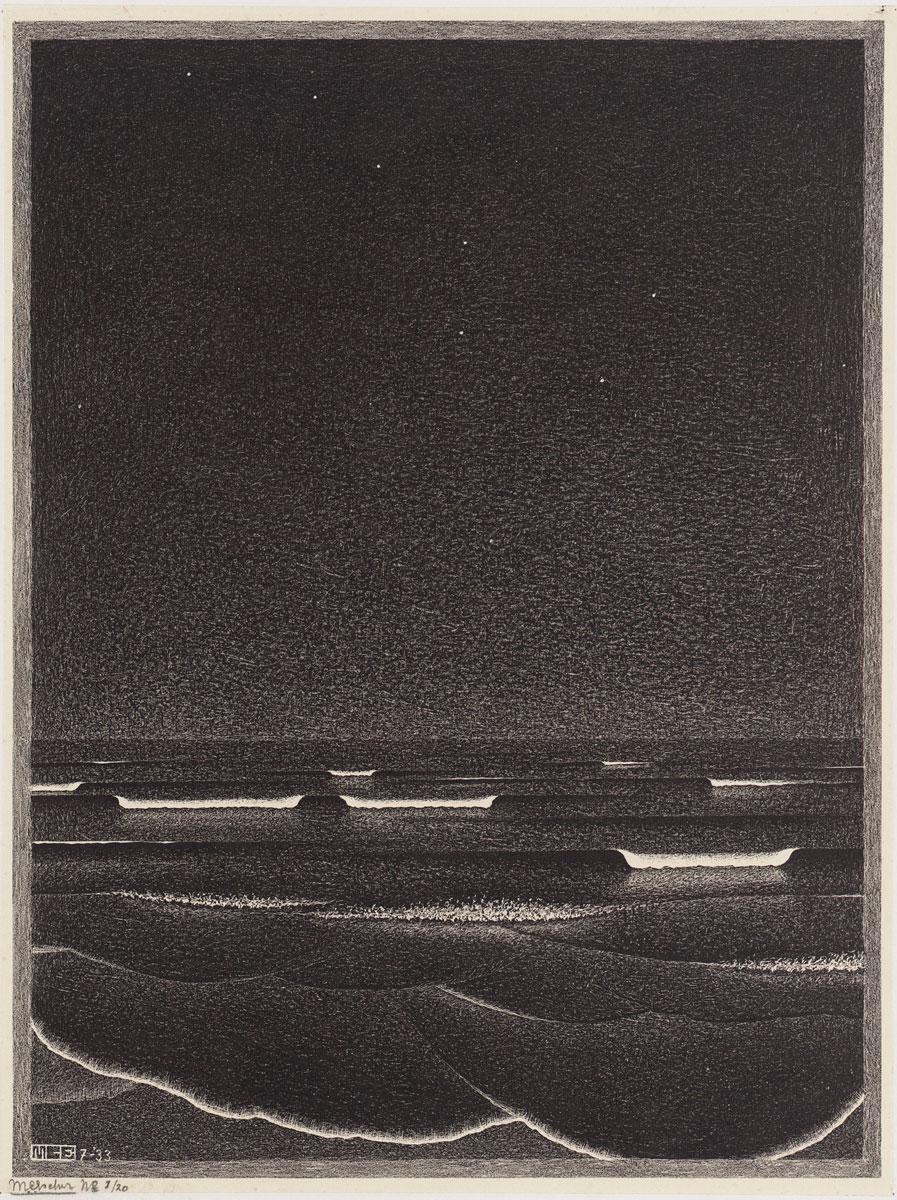
Source
[*], [**] and [***]: Wim Hazeu, M.C. Escher, Een biografie, Meulenhoff, 1998, page 387-391
More Escher today

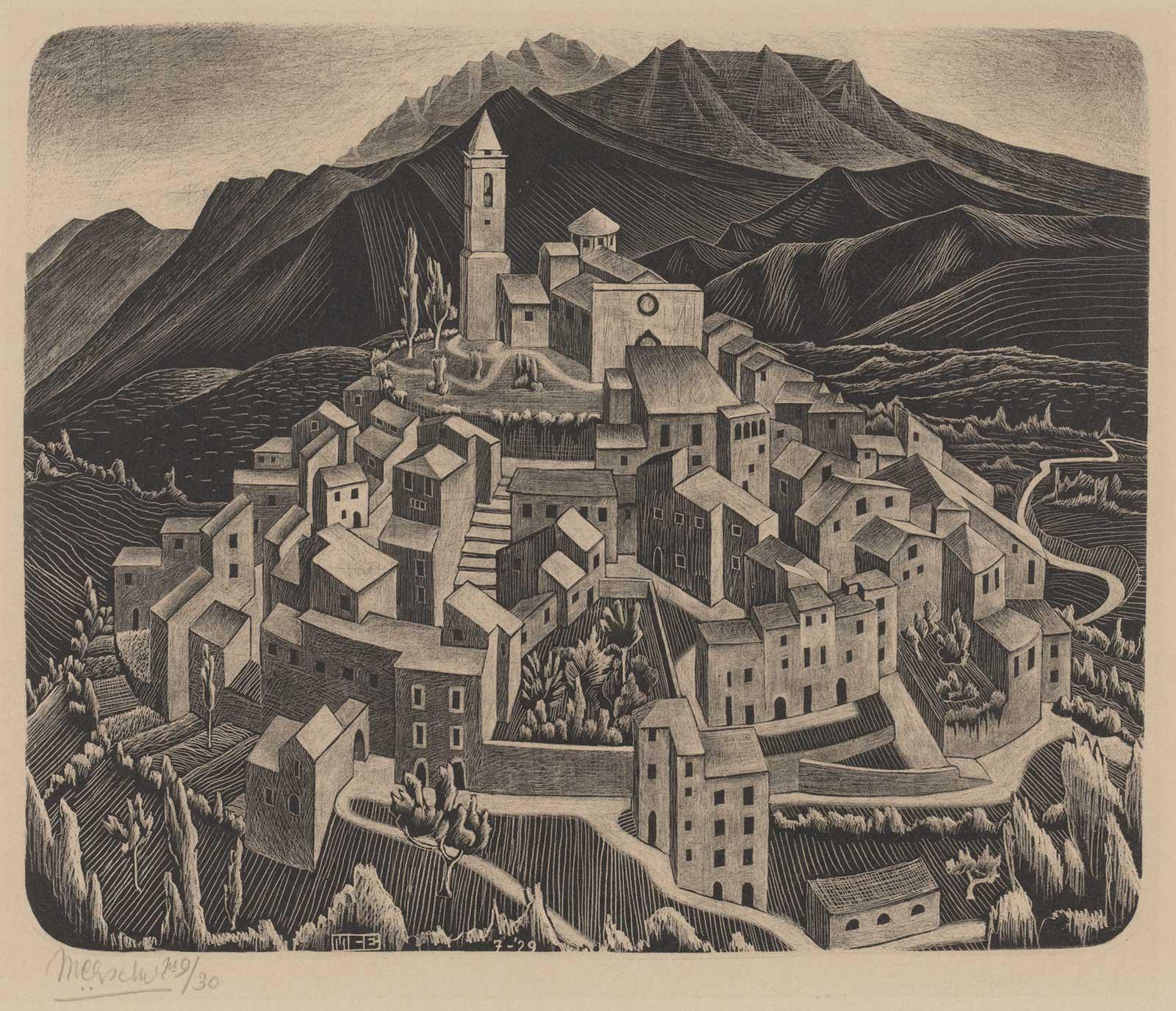
First lithograph and Schaffhausen
